Until today, to talk about supersonic commercial flights is to talk about the Concorde, the unique supersonic civil airplane that transported during a few decades, passengers between international airports all around the World; due to issues with investments, airplane design, performance and others facts, some other projects only reached “the gates” of the possibility to become a reality. Concorde was a brilliant piece of machinery, unfortunately, it puts too much emissions in the environment, too much noise, and was too expensive to operate.
A new era of supersonic flight might be just around the corner, but there are challenges that we have to handle when it comes to flying faster than the speed of sound. “Hyper Sting” (alias -the Peregrine Falcon-) is a new concept about of future supersonic commercial airplanes. Today, there are some projects for a new era of supersonic flights from different private & public initiatives, some of those are well underway and could become in few years in a real concept.
The “Hyper Sting” concept has the objective to become, in some ways, different to other future concepts, due to incorporation of innovative solutions, like, a new fuselage geometry (central body) with active variable geometry wings. The new concept system helps to reduce the sonic boom, a new system to create energy for the airplane, a new concept of engines, a new aerodynamic device, capable to generate for itself energy and also a new guidance system.
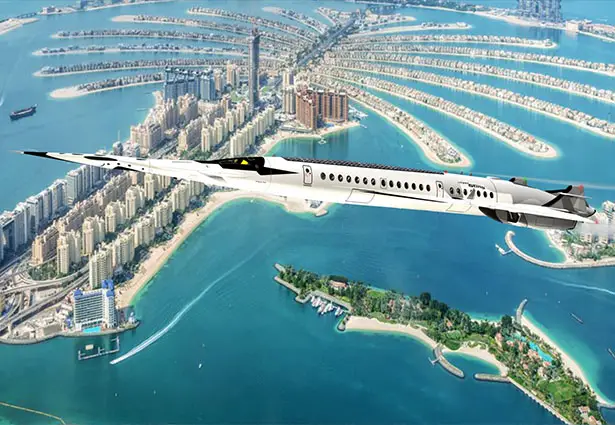
The fuselage of Hyper Sting Supersonic Airplane by Oscar Viñals is designed to have the shape of a “big sting” with a very sharp “nose”, that would have the function to control the front airflow (pressure/speed), in order to redistribute it over the central part and over the wings with the objective to reduce the overlapping wavefronts, reducing the acute angle of the shock cone at supersonic speed, that creates shock waves united, to form a large sonic wave that become into an “N” shape, which creates the loud sound, noise generally be heard within a 30-mile radius.
The airplane would have an innovative trident shape (fuselage-wings) and thanks to a system based on multiple thrusters (16 units) located on the “nose” of the airplane and controlled by an AI system with hundreds of sensors all around the plane, could control and reduce the sonic boom effect.
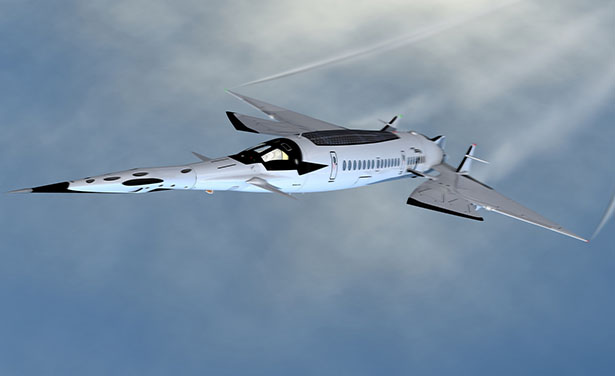
Powered by four hybrid turbojet (next gen of hydrogen/electric airplane engines) with “afterburners” (only used only to pass through the upper transonic regime to supersonic speeds up to Mach 1.5) and a ramjet system incorporated inside of each of those engines with a front diffusers that could compress the intake air, changing its angle of incidence, those could begin to run at Mach 1.5, wouldn’t be the optimal speed with the current ramjet engines, but thanks to use a new type of combustion chamber with plasma power and hydrogen fuel mixed with inlet air at supersonic speed, could produce a maintainable thrust up to Mach 3.5 (4,287 kph).
The amounts of fuel that would use to propel the airplane would be low, due to the combustion at very high temperature (plasma) & high pressure. Also, could have a “big” ramjet engine, located on the rear part of the fuselage that could generate a “rocket” thrust, in order to assist the main airplane engines at supersonic speed.
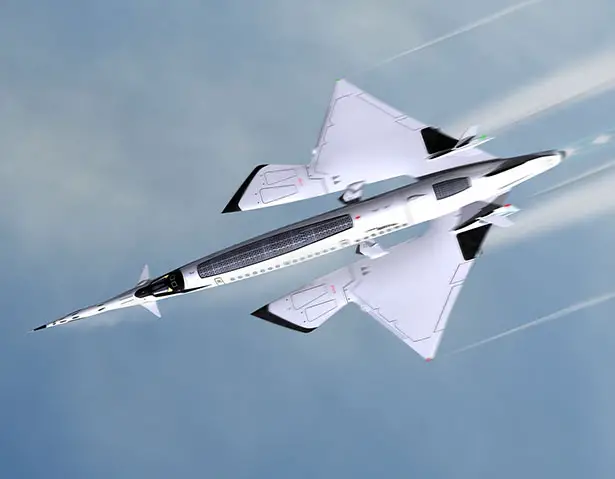
With a Cold Nuclear Fusion “core”, based on Lattice Confinement Fusion process that could create great amounts of electric energy like a powerful battery; NASA has unlocked nuclear fusion on a tiny scale, with a phenomenon called lattice confinement fusion that takes place in the narrow channels between atoms. A device with this type of “Fusion reactor”, would be located on the rear part of the airplane and could “feed” the engines and the ramjet’s combustion chambers with electric energy (clean energy).
“Lattice confinement” may sound complex, but it’s just a mechanism—by comparison, tokamaks like ITER and stellarators use “magnetic confinement.” The fusion that takes place in the narrow channels between atoms. In the reaction, the common nuclear fuel deuterium gets trapped in the “empty” atomic space in a solid metal. What results is a Goldilocks effect that’s neither supercooled nor superheated, but where atoms reach fusion-level energy.
“At the very least, it could be suited to applications where a magnetic fusion reactor isn’t feasible. Before then, scientists will need to find a way to increase the rate of atomic reactions manyfold, and they say they have several ideas for how to try to do that” (source: Popular Mechanics).
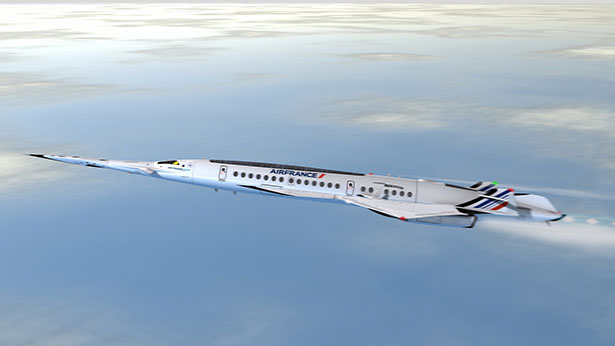
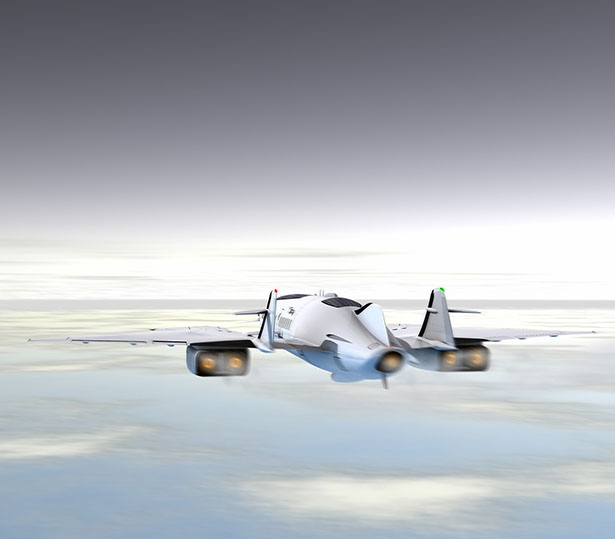
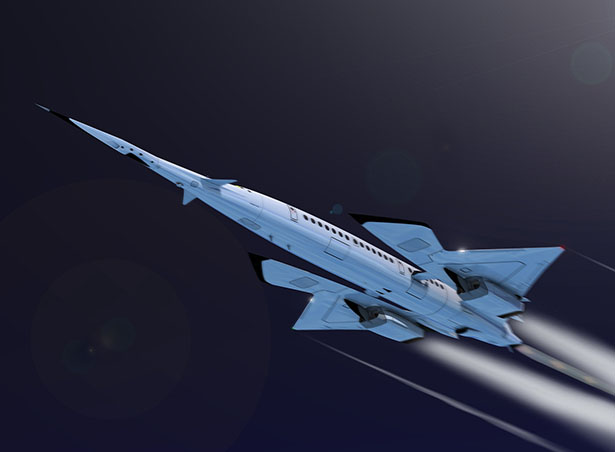
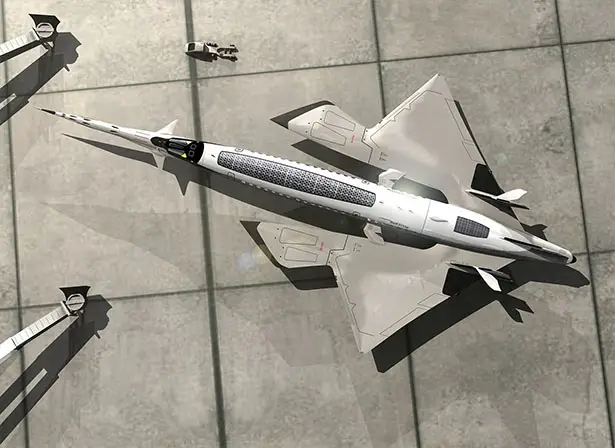
Takeoff & landing at low speed, like current commercial airplanes; thanks to its Active Variable Geometry Wings that could change its geometry and get an optimal sustentation at low speed with “short” runway distances. The wings could have active flaps controlled by an AI and those could act like an air brakes too.
With Quantum technology, the “Hyper Sting” could be equipped with quantum dot solar cells (QDSC), located on the top of the fuselage and inside the windows. These cells could generate enough electric energy for passenger’s devices and some airplane subsystems. This supersonic airplane is capable to transport up to 170 passengers in a very comfortable accommodations at Mach 3.5 and cover long distances, New York to Sydney (in 4.20h) or Los Angeles to Paris (in 2.30h), all of these trips in one stage.
With a special guidance system, based on next generation of fighters; with LiDAR, holographic 3d image and satellite laser guidance, a special device located under the “nose” of the airplane, could assist the pilots on the maneuvers of takeoff & landing thanks to those technologies. Made on carbon fiber, special aluminum alloys, structures of graphene, titanium, meta-materials, ceramic composites, Hyper Sting comes with three special rear vertical stabilizers to obtain an optimal aerodynamic performance at high speeds. Of course, one of the most remarkable skills of the “Hyper Sting” would be its “eco-friendly behavior”.
More images of Hyper Sting Supersonic Airplane:
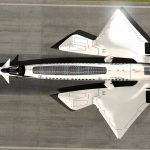
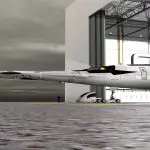
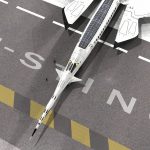
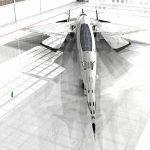
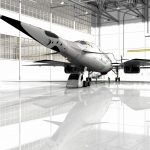
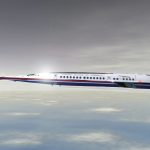
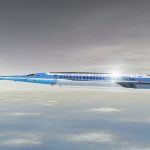
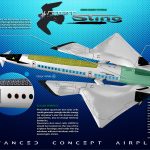
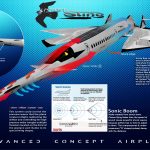
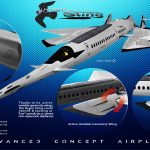
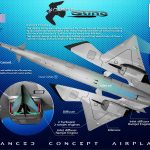
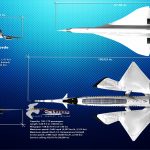
SPECIFICATIONS
- Capacity: 130–170 passengers
- Length: 328 ft 4 in (100.03 m)
- Wingspan: 168.63 ft 0 in (51.40 m)
- Maximum speed: 2,664 mph (4,287 km/h, 2,315 kn)
- Maximum speed: Mach 3.5 (temperature limited)
- Cruise speed: 2,486 mph (4,000 km/h, 2,160 kn)
- Service ceiling: 65,616 ft (20,000 m)
Tuvie has received “Hyper Sting” project from our ‘Submit A Design‘ feature, where we welcome our readers to submit their design/concept for publication.








Mass produce, awesome super plane by super designer.
Ideal for Fed Ex cargo runs too
Not sure whether it'd be necessary for cargo, since it's cheaper to transport cargo at slow speeds and with multiple stops instead of nonstop